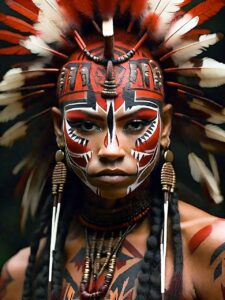 which tribe is the largest tribe in the world ?
which tribe is the largest tribe in the world ?
Defining the “largest tribe in the world” can be subjective and depends on various factors such as population size, cultural distinctions, and historical considerations. However, if we focus on population size alone, the Han Chinese can be considered one of the largest ethnic groups in the world. With over a billion people, the Han Chinese constitute a significant portion of the global population. It’s important to note that the term “tribe” may not be the most accurate descriptor for the Han Chinese, as it is often used in the context of indigenous or traditional societies. The Han Chinese are an ethnic group with a rich history and cultural diversity within their vast population.
which is the largest tribe group?
Determining the “largest tribe group” is complex and depends on various factors such as definitions, cultural distinctions, and demographic data. However, one of the most populous tribal or ethnic groups in the world is often considered to be the Han Chinese. The Han Chinese constitute the largest ethnic group in China and make up a significant portion of the global population, with over a billion people identifying as Han Chinese. It’s important to note that the term “tribe” is not always used to describe the Han Chinese, as it is more commonly applied to smaller, indigenous, or traditional societies.
write in details about different tribes in Africa.
Africa is incredibly diverse, and it is home to numerous ethnic groups and tribes, each with its own unique culture, languages, traditions, and histories. It’s essential to note that Africa is a vast continent with over 50 countries, and within each country, there are multiple ethnic groups. Here, I’ll provide a brief overview of some prominent tribes from different regions of Africa:
Zulu (South Africa):
The Zulu people are the largest ethnic group in South Africa.
They have a rich history, known for their strong warrior culture, led by famous leaders like Shaka Zulu.
Zulu language, isiZulu, is one of the country’s official languages.
Maasai (Kenya and Tanzania):
The Maasai are a pastoralist people known for their distinctive customs, clothing, and elaborate beadwork.
They inhabit parts of Kenya and Tanzania, primarily in the East African Rift Valley.
Traditional Maasai society revolves around cattle, which hold significant cultural and economic value.
Hausa (Nigeria, Niger, Ghana, and others):
The Hausa people are one of the largest ethnic groups in Africa, residing in West Africa.
They have a rich cultural heritage, with a history of trade, art, and Islamic influence.
The Hausa language is widely spoken in the region.
Yoruba (Nigeria, Benin, Togo):
The Yoruba are a major ethnic group in Nigeria and neighboring countries.
They have a vibrant culture, with a strong emphasis on art, music, and religion.
The Yoruba people are known for their ancient city-states and kingdoms.
Himba (Namibia):
The Himba people are indigenous to northern Namibia, known for their semi-nomadic pastoralist lifestyle.
They are recognizable by their distinctive appearance, often adorned with red ochre and intricate hairstyles.
Amhara (Ethiopia):
The Amhara people are one of the largest ethnic groups in Ethiopia.
They have a rich history and are known for their contributions to Ethiopian culture and politics.
Berber (North Africa):
The Berber people are indigenous to North Africa, including countries like Morocco, Algeria, Tunisia, Libya, Mali, and Niger.
They have a diverse cultural heritage, with various subgroups speaking different Berber languages.
Ashanti (Ghana):
The Ashanti people are part of the Akan ethnic group in Ghana.
They are known for their vibrant traditions, including the Ashanti monarchy, which plays a central role in their society.
San/Bushmen (Southern Africa):
The San people, often referred to as Bushmen, are indigenous hunter-gatherer communities in Southern Africa.
They have a deep connection to the land and are known for their unique click languages.
These are just a few examples, and Africa is home to a vast array of ethnic groups and tribes, each contributing to the continent’s rich cultural tapestry.